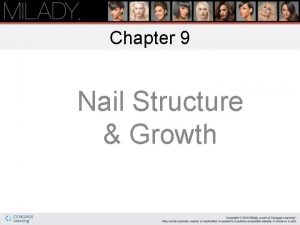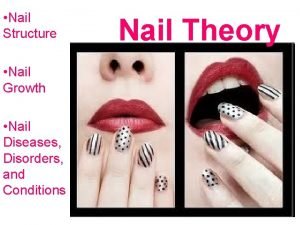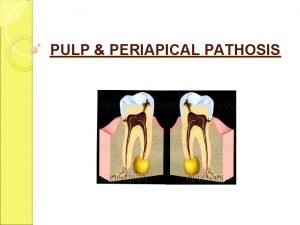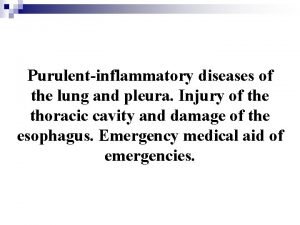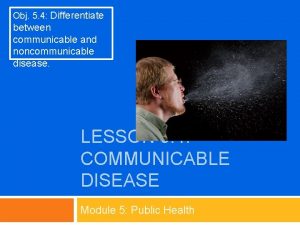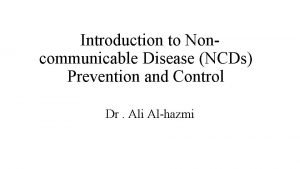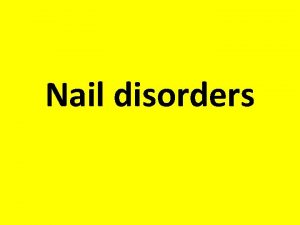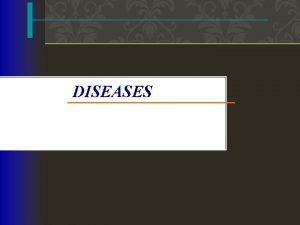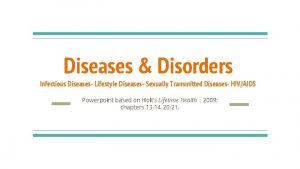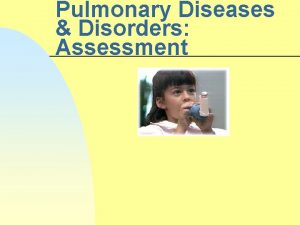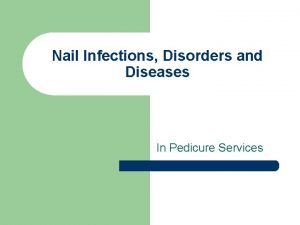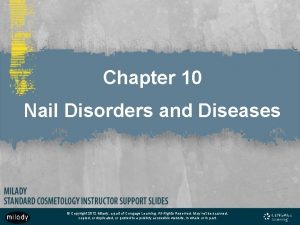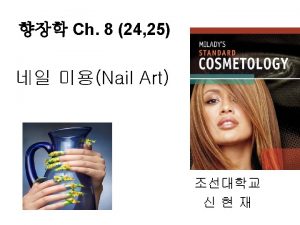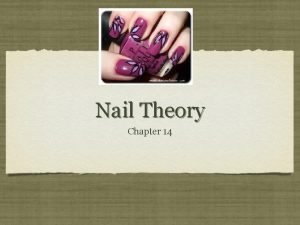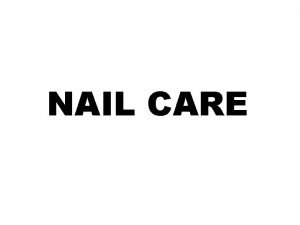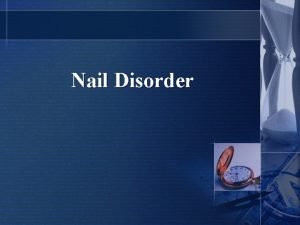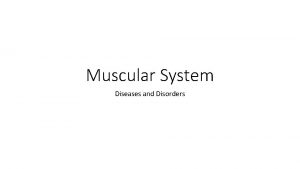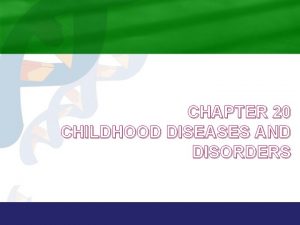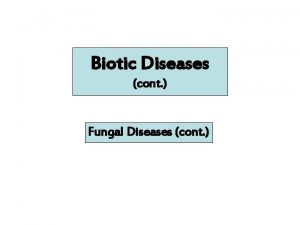Nail Structure Nail Growth Nail Diseases Disorders and




































- Slides: 36

• Nail Structure • Nail Growth • Nail Diseases, Disorders, and Conditions Nail Theory

Onychology The study of nails.

Nail Structure 1. Free Edge – Extends past the skin. 2. Nail Body – Visible nail area. 3. Nail Wall – Skin on both sides of nail. 4. Lunula – Whitened half-moon 5. Eponychium – Lies at the base of the nail, live skin. 6. Mantle – Holds root and matrix.

Nail Structure 7. Nail Matrix – Generates cells that make the nail. 8. Nail Root – Attached to matrix 9. Cuticle – Overlapping skin around the nail 10. Nail Bed – Skin that nail sits on 11. Nail Grooves – Tracks that nail slides on 12. Perionychium – Skin around nail 13. Hyponychium – Underneath the free edge

Hyponychium Nail Body Nail Groove Nail Bed Lunula Eponychium Matrix Nail Root

Free Edge Nail Bed Eponychium Matrix Nail Root

Nail Growth • Keratin – Glue-like protein that hardens to make the nail. • Rate of Growth – 4 to 6 month to grow new nail – Approx. 1/8” per month • Faster in summer

Injuries • Result: shape distortions or discoloration – Nail lost due to trauma. – Nail lost through disease.

Types of Nail Implements Nippers Nail Clippers Cuticle Pusher Emery Board or orangewood stick

Nail Diseases, Disorders and Conditions • Onychosis – Any nail disease • Etiology – Cause of nail disease, disorder or condition. • Hand Nail Examination – Check for problems • Six signs of infection – Pain, swelling, redness, local fever, throbbing and pus

Symptoms • • Coldness – Lack of circulation Heat – Infection Dry Texture – Lack of moisture Redness – Infection Color of Nail Bed – Bruise Condition of Free Edge – Nail biter Tenderness/stiffness – Arthritis Nail Plate Thickness - Filing

Nail Irregularities • Refer to a physician!! –Do not diagnose!!

Onychomycosis • Tinea Unguium / Ringworm • Cause – fungus • Thick, turns colors, deformed • See physician • No services may be performed!!!

Tinea Manus • • • Hand Ringworm Fungus Blisters & flakes See physician No services may be performed!!

Tinea Pedis • Athletes Foot / Foot Ringworm • Fungus • Itching & red blisters • See Physician • No services may be performed!!

Paronychia • • • Inflammation Bacterial Infection Shows signs of infection May grow out irregular See physician No service may be performed!!

Onychoptosis • Shedding of Nails • Disease • Sensitive, nail loss – Will re-grow • Needs to be protected • No service may be performed!!

Onychia • • Inflammation of Matrix Bacterial Infection Signs of infection Nail may not grow back – If it does grow, may be deformed • Needs to be protected • No services may be performed!!

Onychatrophia • • Wasting away of the nail Injury Shrinkage, separation May improve in 3 – 6 months • No services may be performed!!

Onycholysis • Loosening of Nail • Systemic • Partially loose nail, becomes detached • See physician • No services may be performed!!

• Blue nails • Systemic • Blue in color, poor circulation • Manicure with caution! Blue Nails

Corrugations • Ridges across nail • Injury/systemic • Ridges – Buff lightly – Ridges may disappear while growing out. • Lightly buff, apply base coat

Kolionychia • Spoon Nails • Systemic • Concave, unusual shape, unlikely to disappear • File carefully, polish to protect

Furrows • Vertical Lines • Injury • Buff lightly, may grow out, may be permanent • Lightly buff and apply base coat

Onychogryposis • Claw Nails • Systemic • Thick, curved, clawlike • Physician may remove – Difficult to clean and cut. • Clean under free edge.

Extreme Case of Onychogryposis

Onychocryptosis • Ingrown Nails • Environmental • Signs of infection: No Service • Refer to physician • If not infected: Soften skin, trim nail • DO NOT CUT OUT INGROWN NAIL!!

Onychauxis • Hypotrophy • Injury • Thickness, easily recognizable • Lightly buff

Agnails • Hang Nail • Dry Cuticle • Skin breaks at corner of nail, trim • May heal in 2 to 3 days • Trim Hangnail and Moisturize

Bruised Nails • Purple Nails • Trauma • Discoloration under nail, normal growth will continue • No pressure on nail plate.

Leuconychia • White spots • Injury or liver disease • Small separation from nail bed, grows out with nail. • Perform nail service as usual.

Pterygium • Overgrown cuticles • Sticky cuticle • Excess cuticle that splits and eventually tears. • Soften, massage cuticles and push back – Unless skin is broken, then no service.

Extreme Case of Pterygium

Onychophagy • Bitten Nails • Habit • Easily recognizable, will re-grow if biting stops • Perform nail service weekly

Onychorrhexis • Split Nails • Injury (improper filing or harsh chemical contact) • Easily recognizable, file with emery board carefully, may be permanent • Soften nails, use hot oil manicure

 Onychomycosis milady
Onychomycosis milady In what situation should a nail service be performed
In what situation should a nail service be performed Define a primary skin lesion and list three types
Define a primary skin lesion and list three types Chapter 6 musculoskeletal system
Chapter 6 musculoskeletal system Chapter 21 mental health diseases and disorders
Chapter 21 mental health diseases and disorders Chapter 17 reproductive system diseases and disorders
Chapter 17 reproductive system diseases and disorders Chapter 15 nervous system diseases and disorders
Chapter 15 nervous system diseases and disorders Chapter 8 skin disorders and diseases
Chapter 8 skin disorders and diseases Cardiovascular system diseases and disorders chapter 8
Cardiovascular system diseases and disorders chapter 8 Milady chapter 8 skin disorders and diseases
Milady chapter 8 skin disorders and diseases 10 diseases of lymphatic system
10 diseases of lymphatic system Tissue bordering the root and sides of fingernail
Tissue bordering the root and sides of fingernail The dead colorless tissue attached
The dead colorless tissue attached Define growth analysis
Define growth analysis Root hair structure
Root hair structure Primary growth and secondary growth in plants
Primary growth and secondary growth in plants Primary growth and secondary growth in plants
Primary growth and secondary growth in plants Step growth polymerization vs chain growth
Step growth polymerization vs chain growth Geometric growth graph
Geometric growth graph Neoclassical growth theory vs. endogenous growth theory
Neoclassical growth theory vs. endogenous growth theory Organic growth vs inorganic growth
Organic growth vs inorganic growth Nail diagram
Nail diagram Modern lifestyle and hypokinetic diseases
Modern lifestyle and hypokinetic diseases Communicable and noncommunicable diseases venn diagram
Communicable and noncommunicable diseases venn diagram Section 19-3 diseases caused by bacteria and viruses
Section 19-3 diseases caused by bacteria and viruses Chapter 24 sexually transmitted diseases and hiv/aids
Chapter 24 sexually transmitted diseases and hiv/aids Chapter 22 genetics and genetically linked diseases
Chapter 22 genetics and genetically linked diseases Certain infectious and parasitic diseases
Certain infectious and parasitic diseases Pulp and periapical diseases
Pulp and periapical diseases Venn diagram of communicable and non-communicable diseases
Venn diagram of communicable and non-communicable diseases Purulent diseases of lungs and pleura
Purulent diseases of lungs and pleura Tronsmo plant pathology and plant diseases download
Tronsmo plant pathology and plant diseases download Tronsmo plant pathology and plant diseases download
Tronsmo plant pathology and plant diseases download Albugo eye
Albugo eye Difference between communicable and noncommunicable
Difference between communicable and noncommunicable Vitamins functions
Vitamins functions Myth and fallacies about non-communicable diseases
Myth and fallacies about non-communicable diseases











